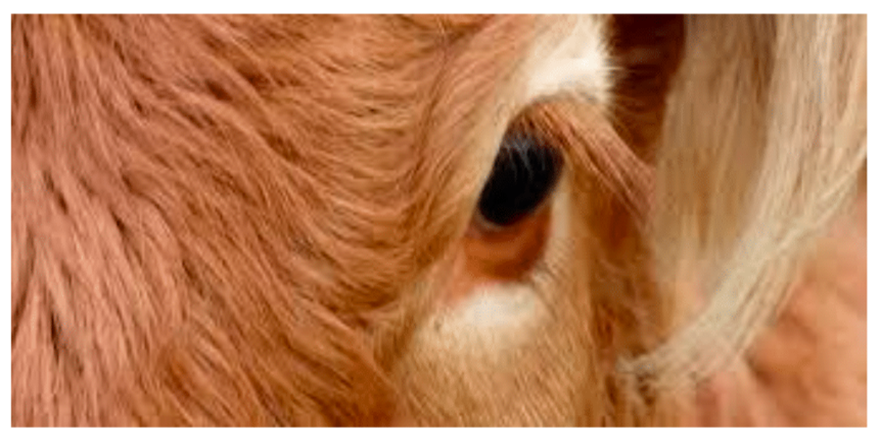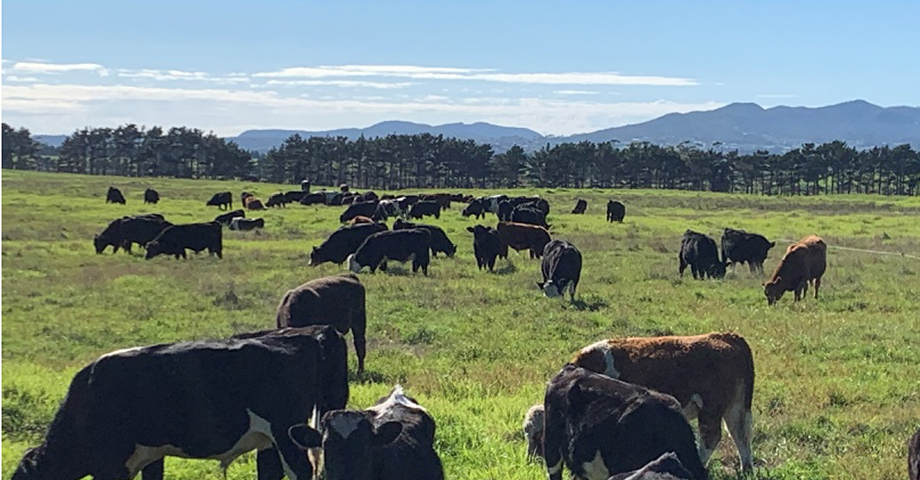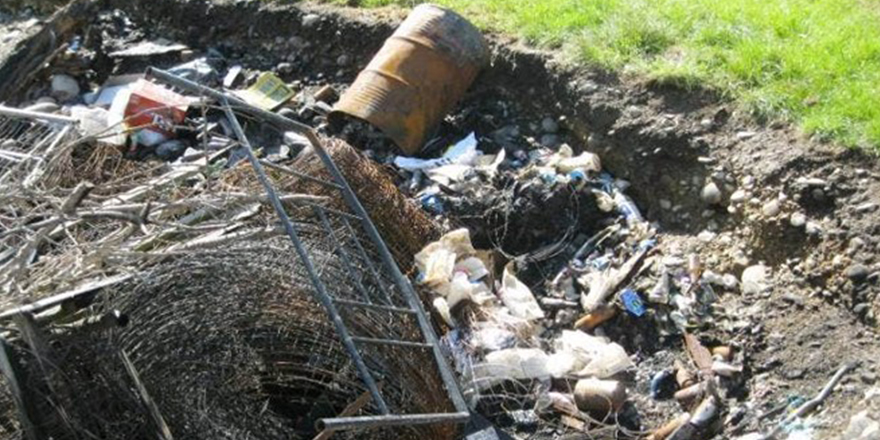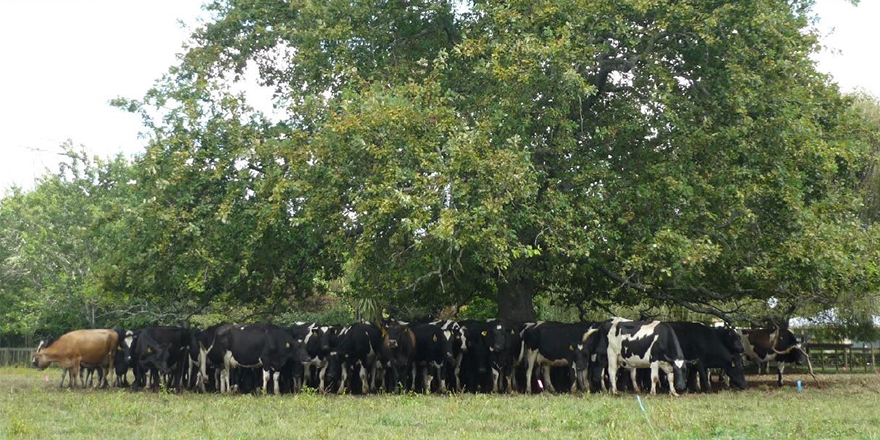
Executive Summary
Infectious Bovine Keratoconjunctivitis (IBK) commonly known as Pinkeye in cattle is a long established animal health problem in New Zealand. Pinkeye is a painful and debilitating condition that can severely affect animal productivity. It is a bacterial infection of the eye that causes inflammation and in severe cases temporary or permanent blindness. Most cattle producers will be familiar with pinkeye but may not know how to best treat it and minimise its spread within the herd.
The economic impact of the disease is significant due to it being highly contagious. Pinkeye can affect up to 85% of a mob, the disease is painful because the eye becomes sensitive to UV light. Affected weaner calves losing up to 10% of their body weight. In rare cases when both eyes are affected cattle may die from starvation, thirst and accidents. The cost and time used treating infected cattle adds to the economic losses.
Managing an intensive large scale calf rearing farm in the Waikato, Pinkeye can be a challenge for the farm. Two of the three years the farm has vaccinated against the disease and one year we didn’t vaccinate at all. In the year we didn’t vaccinate against the disease there didn’t appear to be any more infected calves than previous years. I wanted to know why?
Piliguard is the only commercial vaccine available in New Zealand. It covers three strains of Moraxella bovis bacteria. This is where the science community is in debate over the number of Moraxella’s that exist. 38 strains of Moraxella have been identified by restriction endonuclease DNA analysis ‘BRENDA’ (R.B Marshall, P.J. Winter, B.S. Cooper, A.J. Robinson.1985) Other literature states there are only 7 strains that exist in New Zealand. What isn’t in debate is the only vaccine available does not provide full immunity. Most would conclude that at best it covers half of them.
The use of antibiotics to treat infected animals is common practice. With a worldwide shift to reduce antibiotic use in the food chain and antibiotic resistance increasing, trying to find an alternative to injecting antibiotics is important.
It is a widely held belief by Organic American dairy farmers that supplementing kelp into the diet of cattle reduces the susceptibility to pinkeye due to increased Iodine levels in the tears. It was very difficult to find scientific evidence to support this argument. One study that took place last year at the University of Minnesota stated nothing was known about the Iodine concentration in tears and the conclusion was that cattle fed kelp (Ascophyllum nodosum) for 30 days and no effect on Moraxella bovis (M.bovis) bacteria, the main agent that causes pinkeye.
Five key findings are:
- Vitamin A. I believe all farmers should supplement young animals with vitamin A from a young age. Very few currently do this. It appears calves not reared by cows are naturally deficient in vitamin A. It is thought that nutritional deficiencies specifically vitamin A, Selenium and Copper may contribute to Pinkeye. If any vitamin or mineral can be singled out and ranked, vitamin A is the most important. Vitamin A is important in the fight against disease it is extremely important in for vision and protection of the eyes. The immune function against viral, bacterial and parasitic infections. Virtually all immune cells are effected by vitamin A. This is sometimes referred to as the anti-infection vitamin. The younger the animal the sooner the vitamin deficiency with express itself. Young calves have lower body stores of vitamin A. Hot weather, disease, parasites and other stressors are believed to decrease the efficiency with which vitamin A is utilised.
- Stress and the environment; this is a major contributor to Pinkeye. Dusty yards, heat, flies, thistles, large mobs of animals, lack of shading are all examples of environmental factors that can increase the onset of pinkeye. A good preventative plan should be mindful of these factors. Any stress weakens the immune system. In times of stress animals use up valuable vitamin and mineral reserves which reduce the efficacy of the immune system.
- Kelp. The main question which drove this report was whether supplementation of kelp could improve the incidence of Pinkeye in calves. Although this is anecdotal I believe supplementing calves’ diet with kelp which has over 60 vitamins and minerals would assist greatly in helping to replace valuable vitamins and minerals lost in stressful periods. Because kelp is a plant, it is in a highly absorbable and available form for cattle.
- There is very little research on Pinkeye in New Zealand. Too little diagnostic testing is done in regards to Pinkeye. Gribbles Veterinary Laboratory who I spoke with said they would get less than ten eye swabs sent to them a year. There are nearly 10 million cattle in NZ, and veterinarians surveyed nationwide said about 10% of cattle develop the disease a year depending on the season. That means approximately that 1 million cattle contract the disease a year and veterinarians are sending in less than ten eye swabs a year. This simply isn’t good enough. Until now differentiating between types of Moraxella has never been possible. This is about to change with a new qPCR machine which will enable the science community to learn exactly what bacteria’s we are dealing with. And hopefully to develop a vaccine to cover all the strains.
- Antibiotics. These are the only real tool we have in treating the disease. If the current antibiotics we are using to treat Pinkeye have a reduction in efficacy we will be facing a severe animal health challenge, which could possibly be avoided by further widespread diagnostic testing going forward.
Download and read the full report here



